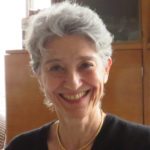Link to Pubmed [PMID] – 23020929
Rev Epidemiol Sante Publique 2012 Oct;60(5):383-7
BACKGROUND: Mucormycoses are rare but severe fungal infections whose incidence is increasing, particularly in immunosuppressed and diabetic patients. Following a retrospective study on the characteristics and outcomes of cases who were identified through two sources of information, we carried out a capture-recapture method to estimate the actual burden of the disease in France, 2005-2007.
METHODS: An administrative dataset from the national hospital discharge system and a laboratory dataset from the National Reference Centre for Mycoses and Antifungals were combined to identify patients from 2005 to 2007. We applied capture-recapture equations to estimate the number of cases missed by both sources and to assess the advantages of each dataset, especially in terms of sensitivity.
RESULTS: There were 94 mucormycosis cases included in the study: 30 and 31 in each respective source and 33 common to both. Capture-recapture showed that 28 cases were missed (expected total: 122 cases, CI95: 102-142). Each dataset had a sensitivity value below 53%. The merged set yielded a 77% sensitivity (66%-92%).
CONCLUSION: This study highlights the importance of combining available sources when analysing rare infectious diseases. The proportion of 23% missed cases might seem acceptable given the scarcity of the disease, for which further knowledge is needed. However this proportion could decrease in the future, through the sensitization of clinicians, pathologists and mycologists together with the improving quality of discharge datasets.


